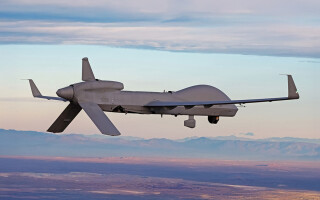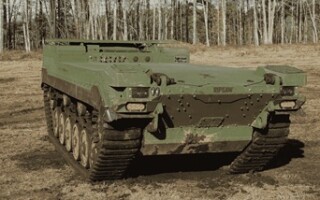In the ever-evolving landscape of modern warfare, the role of artificial intelligence (AI) in shaping the future of military operations cannot be underestimated. With the battlespace’s complexity escalating, the AI-accelerated battlespace’s emergence, enabled by advanced data-processing capabilities at the tactical edge, has become pivotal in assuring mission success. As the speed of warfare increases, we must recognize how edge-based compute technologies are crucial to increase the speed of decision-making.
Military Embedded Systems
Op-Eds
GIVING BACK: Merging Vets & Players - Blog
August 05, 2024Each issue, the editorial staff of Military Embedded Systems will highlight a different organization that benefits the military, veterans, and their families. We are honored to cover the technology that protects those who protect us every day.
GUEST BLOG: The worldwide markets for military radar, sonar, electronic warfare, and communications - Blog
July 30, 2024WARFARE EVOLUTION BLOG: So far in this series, we have explored the worldwide markets for military platforms (tanks, ships, submarines, airplanes, and drones). These segments are interesting to the companies that bend metal, but for us, we want to know about the electronic systems inside those platforms. That insatiable yearning is the inspiration for this article. There’s a plethora of these systems, scattered around the services, so we can’t identify all of them here. I'll just mention the major programs and let you discover the rest on your own.
GUEST BLOG: The promises and pitfalls of an AI-enhanced battlefield - Blog
June 20, 2024In October 2023, the Biden administration issued an Executive Order focused on ensuring that artificial intelligence (AI) – which has captured headlines of late largely due to the rise of ChatGPT – is developed safely and securely. In a military context, this move will include the drafting of a memorandum, produced by the National Security Council and the White House Chief of Staff, that details how the U.S. military can ethically and effectively use AI to carry out its missions while also countering its use by adversaries.
GUEST BLOG: Beware the buzzword - Blog
June 20, 2024Artificial intelligence (AI) is a real buzzword across all industries right now, but coverage across the media spectrum is not always helpful. We’re seeing mind-boggling new technical capabilities being demonstrated each week, but it’s often hard to tie these to real-world use-cases; this, coupled with hype-to-bust predictions and discussions about “artificial general intelligence” serve to further distort the narrative.
MOSA – Friend or foe? - Blog
June 12, 2024As I travel to various places around the world, I am surprised by the perception that different government and supplier organizations have of the modular open systems approach (MOSA). MOSA is designed to lower costs for global coalition forces while accelerating new, highly competitive capabilities for the Warfighter, but folks still do not understand these benefits and sometimes turn MOSA into something that should be feared.
GUEST BLOG: Consolidated avionics improves helicopter capability - Blog
May 16, 2024The consolidation of federated systems into a modular open system approach (MOSA) changes the way helicopter avionics systems operate, interface, and communicate with one another. New capabilities can be quickly inserted, resilient technologies can be emphasized, and digital beamforming antennas expand applications.
GUEST BLOG: The worldwide market for unmanned aerial vehicles - Blog
April 30, 2024WARFARE EVOLUTION BLOG. Previously, we studied the markets for fighter planes and bombers, ground combat vehicles and tanks, warships and submarines, and unmanned naval vessels (surface and underwater). Now, it’s time to explore the market for unmanned aerial vehicles (UAVs), which is rapidly becoming the largest volume segment of the military platforms. First, the UAV designation is actually a misnomer.
Common MOSA, SOSA 2.0 Snapshot 2 - Blog
March 27, 2024While it was officially released in the famous Dept. of Defense Tri-Service Memo five years ago, the concept of a modular open systems approach (MOSA) has been around for some time and is not a new concept, said Jason Dirner, in his keynote address at the MOSA [Modular Open Systems Approach] Virtual Summit held February 22 and hosted by myself and Military Embedded Systems. What is new, however, Dirner said, is “common MOSA, [where] you have multiple programs and services conforming to the same standard,” which enables a greater level of reuse and portability across the community.
GUEST BLOG -- The metaverse, AI, and space defense: Emerging tech transforming 2024 - Blog
March 12, 2024As we settle into 2024, emerging technologies continue to transform how we experience the digital world and beyond. The metaverse promises more immersive and interactive virtual environments through innovations in augmented reality (AR), virtual reality (VR) and generative artificial intelligence (AI). At the same time, AI and machine learning (ML) are proving invaluable in enhancing military operations and national security priorities like space defense.
GUEST BLOG: Industry 5.0 -- The digital transformation of A&D manufacturing confronts the next phase - Blog
March 12, 2024Aerospace and defense (A&D) manufacturers caught up with implementing Industry 4.0 technologies and processes, but now they are facing a new evolution coming in the form of Industry 5.0. The newest iteration could have a number of implications for A&D manufacturers – from cobots and build-to-order to assistive wearables and hyperglobization pullback. The upshot? The humans are back in charge.
The worldwide market for unmanned naval vessels - Blog
February 29, 2024WARFARE EVOLUTION BLOG. In our last escapade, we investigated the worldwide market for warships and submarines. Out of respect for the literary principle of subject matter continuity, we are forced to explore the worldwide market for UNVs (unmanned naval vessels) in this essay, since they are an extension of warships and submarines. UNVs break down into two basic groups: unmanned surface vessels (USV) and unmanned underwater vehicles (UUV). We will deal with naval unmanned aerial vehicles (NUAV) in another composition.
GIVING BACK: NextOp - Blog
February 13, 2024Each issue, the editorial staff of Military Embedded Systems will highlight a different organization that benefits the military, veterans, and their families. We are honored to cover the technology that protects those who protect us every day.
GUEST BLOG: Bringing data processing to the extraterrestrial edge - Blog
February 13, 2024When it comes to data processing and analysis, space is a final frontier that’s filled with challenges. Fortunately, military leaders have access to the technology and tools to make interstellar data processing a success, resulting in faster actionable insights – and a strategic and tactical advantage.
Talking electronic warfare trends, requirements, AOC with Jerome Patoux of ADI - Blog
December 11, 2023We’re here on the first day of the 60th Annual AOC International Symposium & Convention, held at the Gaylord Convention Center in National Harbor, Maryland. Electronic warfare (EW), spectrum dominance, and signals intelligence and the RF, microwave, and signal-processing technologies behind them are key components of both the conference and the exhibition.
For a take on the AOC event, and a look at the EW market, I sat down with Jerome Patoux, Director of Aerospace & Defense for the Aerospace, Defense, and RF Products Business Unit of Analog Devices. Here are some excerpts:
-
Training and simulation systems to support Saab GlobalEye under new CAE agreement
November 21, 2025
-
Next-gen pilot training system to be developed by Saab, Boeing, and BAE Systems
November 19, 2025
-
KC-390 refueling capability validated with Gripen E in Brazilian test campaign
November 17, 2025
-
F-35 air combat training subsystems to be delivered by Cubic
November 13, 2025
-
Terma acquires OSL Technology to boost counter-UAS, infrastructure protection offerings
November 27, 2025
-
EDA project to reduce noise from autonomous underwater vehicles
November 25, 2025
-
Littelfuse Expands X4-Class Portfolio with 200 V, 480 A Ultra-Junction MOSFET in SMPD-X Package
November 25, 2025
-
Uncrewed systems pact for Baltics signed between Quantum Systems and ADV Defense
November 25, 2025
-
AI wargaming platform to be advanced for U.S. Air Force by AMESA
December 03, 2025
-
Image generator for military training using Unreal Engine introduced by Lockheed Martin, Blackshark.ai
December 03, 2025
-
AI-enabled counter-UAS system wins Army competition
November 24, 2025
-
Command-and-control task order to advance multi-domain capabilities under new COBRA award
November 21, 2025
-
Beyond GPS: HORDE PNT for contested environments
December 04, 2025
-
Beyond GNSS/GPS: magnetic navigation and multisensor resilience in contested skies
December 04, 2025
-
Power under pressure: Meeting the military’s surging energy demands
December 04, 2025
-
Shield AI, Sedaro partner to build software to support on-orbit operations
December 04, 2025



















